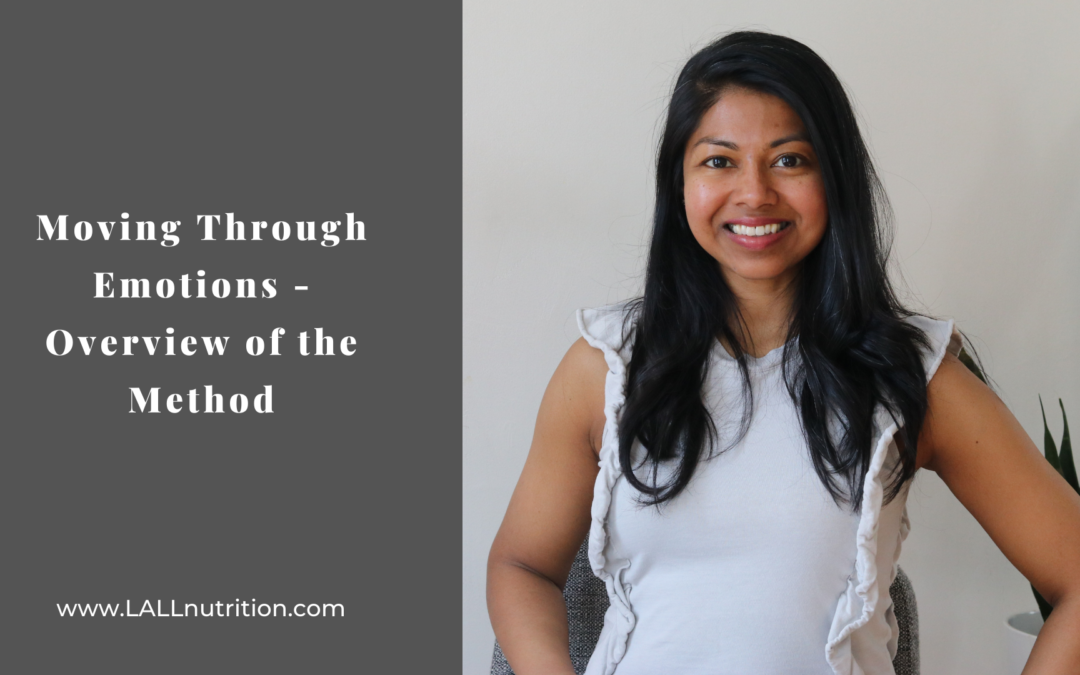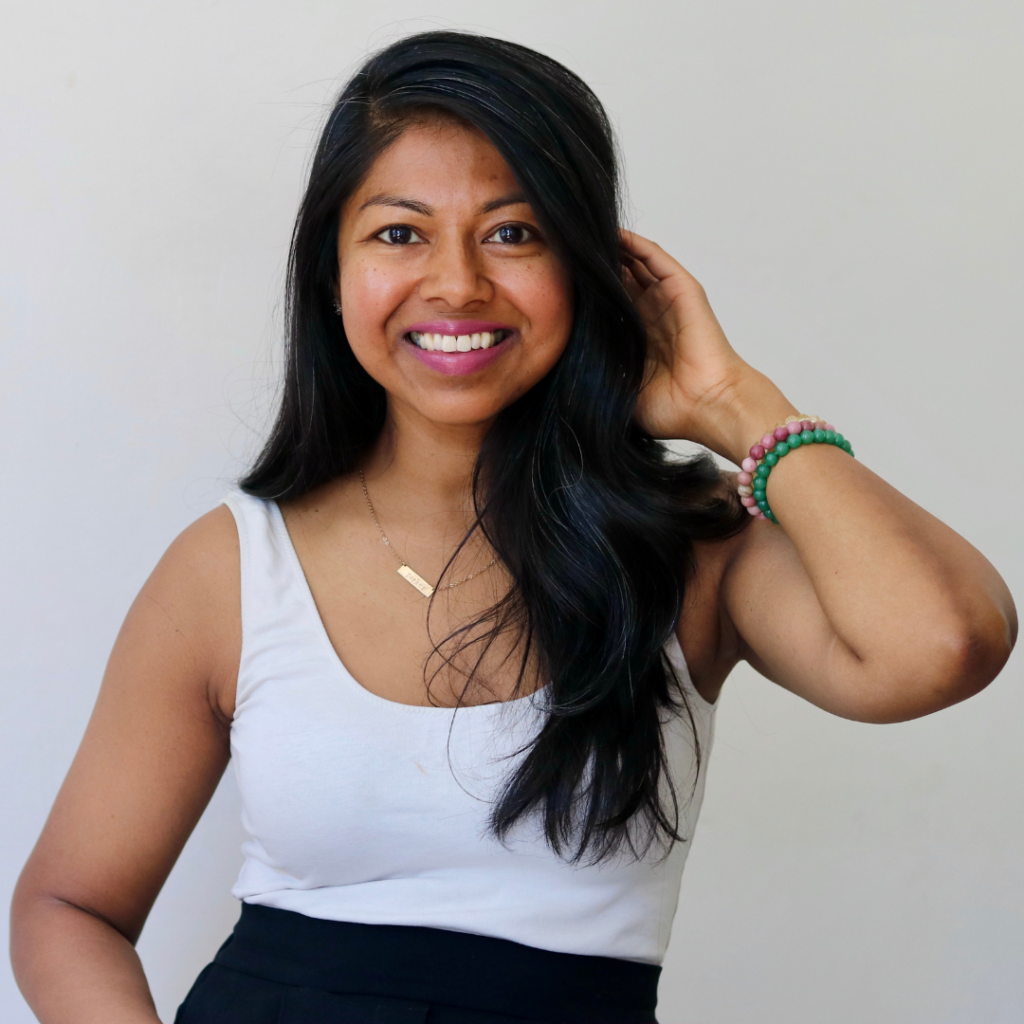Hello love,
Today I wanted to share with you more about emotions and how to process them
What I want to share with you is the way that I look at emotions and how I process through them and help clients move through them because I think this is something that is not well understood.
I’ve never really done a video where I go more into the the way we process through our emotions and the method I use. So I just want to put a disclaimer that everyone has a different way that they can move through their emotions.Some things that I mentioned might work for you and some might not.
For me personally, when I was going through my emotional eating journey and was trying to figure this out, I was going to therapy. I was rewriting my thoughts and using cognitive behavioural therapy. I’ve also tried other modalities to move through my emotions like therapy, reiki, retreats, dance, etc.
What I do with clients and use personally has been the most impactful at shifting and transforming these emotional events that are under our emotional eating or keeping us stuck. I call this somatic meditations but that doesn’t explain the process.
I want to share with you how it works and why it’s important to be done in a particular way. When I work one to one with clients it is a very fluid process. So there are key steps to it. But I move with the client and where they’re going and depending on what comes up for them, we can get to a core memory.
They might need more time to open up to their emotions and to get in touch with their body and to feel that safety, to move through this emotional experience. What I’m going to share with you is going to be the overview of what happens in a session and the way I look at emotions.
What are emotions?
When we have an emotion it is a messenger in our body. What’s happening is that whenever we are interacting with the world, we have an emotional response. Emotions are essentially just a sped up thought or belief. Our body creates biochemicals in response to that. And that’s how we get those feelings of emotions. What happens is usually in early childhood or just from our society in general, we’re not allowed to feel those emotions.
We need to process our emotions through our body; be able to sit and feel them to hear what they’re trying to tell us. So if we’re feeling a negative emotion, maybe we don’t go towards that thing or we’re feeling a positive emotion.
We want to move towards that thing more if we’re happy about it. This is how we can navigate our life. But when we’re younger, we shut down our emotions due to conditioning.
Our family whenever they were feeling negative used food to feel better. So we mirror that and we take that in as our modelling. Or we were shamed for our emotions. “You shouldn’t feel sad” or “here’s a cookie”.
We didn’t feel safe or able to feel the discomfort. We were given food or chose food to feel better. Now we’re trying to go backwards and unravel that messaging.
What happens in a session
In a session we need to learn how to feel ok feeling emotions again in a safe container. We physically relearn that in our body by resourcing our body. We allow our body to let us know which areas feel at ease and feel comfortable. These are areas of resource. The areas of our body that feel tight, compressed and contracted are holding onto emotions we haven’t expressed.
Emotions create biochemicals in our body. But when we don’t feel them they get stuck in the body. When they get stuck in the body, they create pain and contraction. For example if you have stress, it’s cortisol, and there is a tightening in your shoulders OR clenching OR tightness in your stomach OR tightness in your solar plexus or your heart area.
You hold emotions in the uneasy areas of the body.
Through the process, we resource the body. We make the body as feel as good and at ease as possible. We do this through some guided meditations that connect the somatic sensations in the body. You feel good being you. When you feel good being you, you’re usually at your most loving, most compassionate, most open.
Accessing the issue in the body
From this place, we ask the body to show us the issue we’re working on. For example the trigger in your emotional eating. We find the trigger in the body through tight or contracted sensations in the body. We focus on this area. We use our mind to focus on the area and observe not to tell us a story.
When we focus on the area of the body we ask a question into it and we pause. Usually it will give us a memory or an image or a situation, and we can ask further questions. We are not interrogating this part. We’re being with it as lovingly and compassionately as as possible. We don’t want to rush it because it’s a very tender part that has kind of gone into hiding. It’s stuck for a reason.
Note on working with your younger self
We need to be very open and loving and compassionate because most likely that part of us is very young. If you think about a young child, they want to be in a loving presence. They want compassion. They want to know you understand them and have empathy. So if we don’t validate this part and just tell it to “let go” it might close up. That’s really negating and invalidating the experience of this younger part of you.
I see that happening a lot. I just want to draw attention to it. If you really put yourself in the role of a child having that deep compassion and empathy is so important.
The thing we have to understand, and this is a side note, is that children’s brains develop in a specific way. The most logical part of the brain, the prefrontal cortex, is still growing until we’re 25 years old. The way it matures is by feeling and processing through our emotions. So a child who is 3,4,5,7 years etc, doesn’t have the same perspective as an adult would.
In order for children to have a more open perspective, their emotions need to be validated. They need empathy and to be seen. This allows the emotion to process in anther part of the brain so that they can access the pre-frontal cortex.
So when they feel they’re seen and heard (which is what we’re all craving btw) then it feels like “Ahhhhh” – I can feel this emotion I’ve been holding in because it wasn’t safe to feel this emotion.
Then there is insight as to what needs to change because the logical part of the brain can step in. Maybe you need more time, more movement, a different career, more sleep etc. It will come from this place. And so once we allow that part to really process and validate it and ask it for what it needs, then we can create a new way of being in our present life.
It’s all happening in the body
And we’re doing this all in the body. It’s all somatic. When we come out of this experience, what clients notice is their body will feel at ease because that contraction and tension you were holding, that emotion you couldn’t express you’ve processed it. So your body can relax, your nervous system opens up and you will feel more at ease in your body. You will have a better way of moving forward. You are healing and integrating your inner child. You’re healing that past experience.
Unprocessed emotions live in the body as trauma. We need to resolve them to resolve the trauma.
Overview
So that was the overview of what I do with clients. It is very experiential. When we are not raised in an environment that’s very conducive to letting us feel, and especially in our society, we hold those things in our body. Over time it will create pain and discomfort in those areas. At first it’s really subtle. You don’t notice it.
If this resonates with you and you’re looking for a deeper way to process those emotions under your emotional eating, I invite you to book in an Emotional Eating Assessment call to see if the Emotional Eating Evolution Program can support you.
To resolution,
Michelle
Certified Holistic Nutritionist + Emotional Eating Expert


